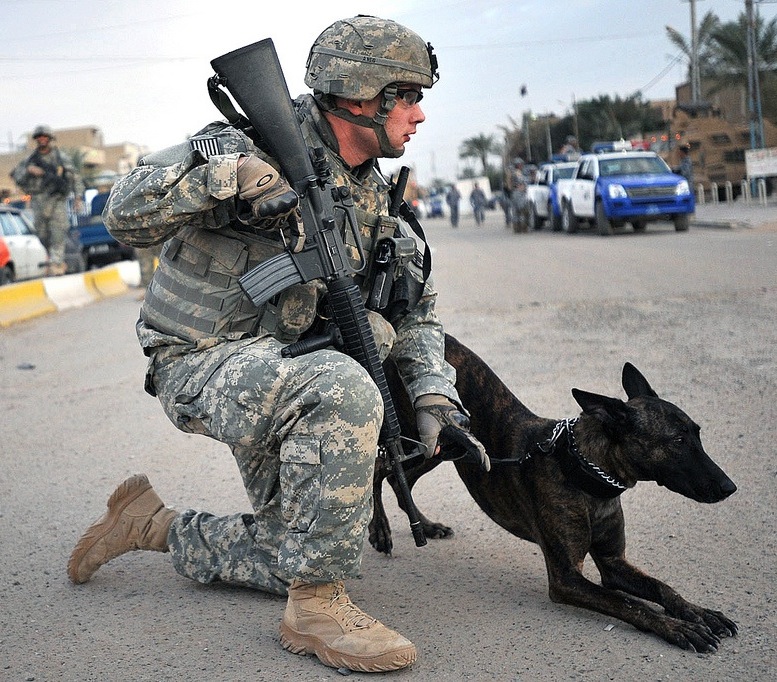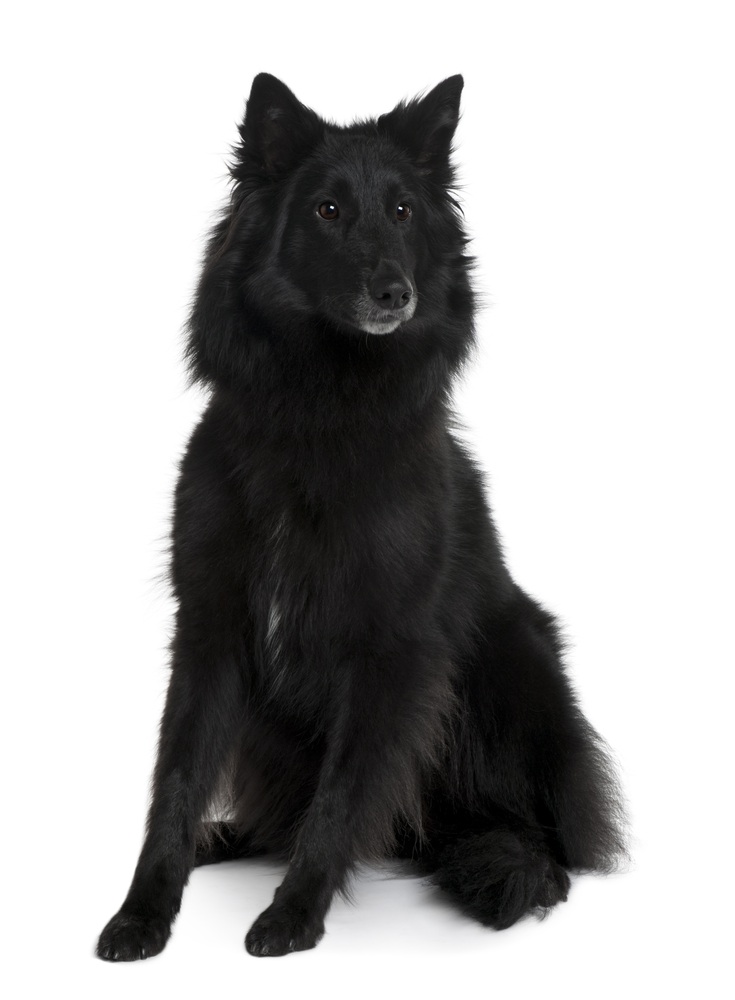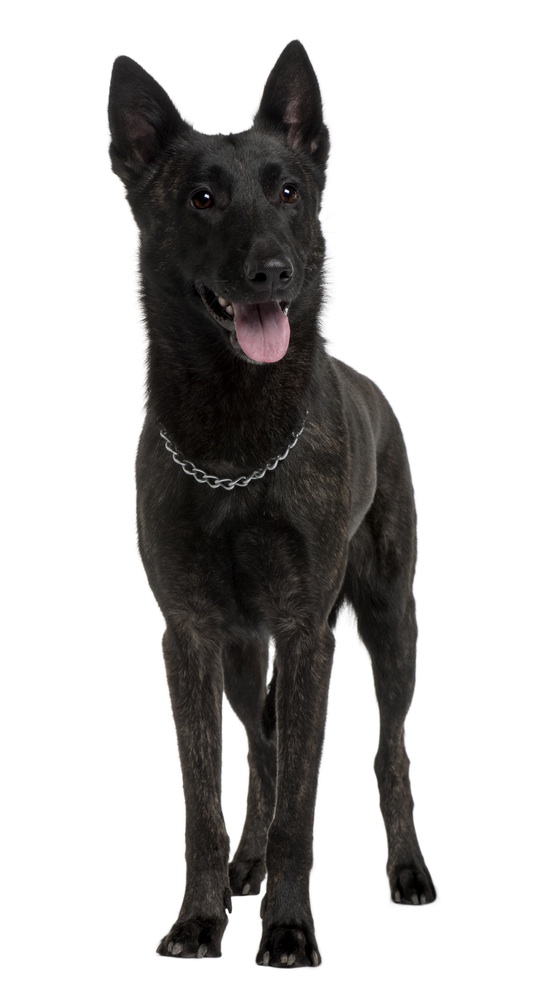Herding Dogs
Across Europe, the grey wolf and other predators ranging from bears to eagles represented a serious threat to sheep flocks. In order to protect livestock, dogs were therefore required which could act both as guardians and herders. They had to be able to react instinctively to danger even in the absence of their handler, and also prevent flock members from straying.
These tasks demanded dogs that could display an innate intelligence and responsiveness, as well as an adaptable nature. Not surprisingly therefore, although their original role has altered significantly, many of the breeds originally developed for this type of work are now to be found carrying out other tasks which call for these same qualities today. They are often used both by the police and the military, here in Iraq (photo © Army.mil) in addition to being popular as guide dogs and family pets. These breeds are particularly suitable for homes with teenage children.
The German shepherd dog
By far the best-known member of this group is the German shepherd dog, formerly known as the Alsatian, after the region of Alsace on the Franco-German border where it was developed. These dogs are now seen almost exclusively with short coats, which can be groomed easily, although long-coated individuals do still crop up occasionally. Sadly, the wire-haired form now appears to have become extinct.
Today’s breed has evolved from various regionalized forms that existed in the 19th century. The long, sloping back which is a characteristic of modern German shepherds was less apparent in their ancestors, which had a squarer profile overall. These dogs are still usually dark in colour, with lighter underparts.
More recently however, notably in the US, a distinctive white breed has been created, which is now described as the white shepherd. Its development is still controversial among purists, because this colour was banned for many years from German shepherd lines.
Belgian breeds

Similar shepherd dogs are also known from Belgium, where they have become localised into four distinct groups. They are of a lighter build overall, compared with the German shepherd, but show distinctive similarities in terms of appearance.

The elegant Groenendael is characterised by its long coat which is glossy black in colour. The Tervuren is identical in appearance to the Groenendael, aside from the fawn tipping to its coat, and their close relationship is reflected by the fact that both may occur in the same litter.
The Malinois is also fawn and black, but easily recognized, thanks to its distinctive short coat. Rarest of the Belgian shepherds, which may be considered as varieties rather than individual breeds in their own right, is the Laekenois. This is the only rough-coated example, with a very distinctive tawny-gold coloration.
Dutch shepherd dog

While the German and, to a lesser extent, the Belgian breeds have become widely-kept outside their homelands, the Dutch shepherd dog remains much rarer, being essentially unrecognised outside its homeland.
These herding dogs still display the typical pricked ears, low-slung tail and strong bodies which characteristic these similar breeds however, and have been highly valued for working purposes in the Netherlands for well over 300 years.
Dutch shepherd dogs also occur in all three coat types - short), long and rough-haired (= coarse-haired) forms, sharing a close lineage with both German and Belgian shepherd dogs.This coarse-haired variety, known locally as the Hollandse Hedershond Ruwhaaige, is regarded as the oldest form, and used to be the most common, but is now very rare.
As to why they do not enjoy a higher international profile in the dog world is possibly just a quirk of fate, as records reveal that some where taken to Australia as long ago in the 1700s.